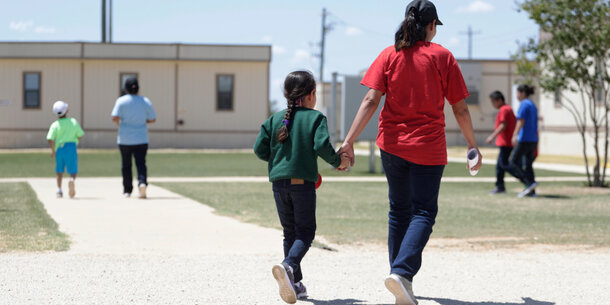Violence prevention is a social and racial justice issue that is an essential ingredient for criminal justice reform. Scholar Thomas Abt advocates in his recent book, Bleeding Out: The Devastating Consequences of Urban Violence and a Bold New Plan for Peace in the Streets, that we need to treat urban violence like a gunshot wound in the emergency room. That is, we must first stop the bleeding — literally.
This, of course, does not suggest that addressing urban violence is the only thing needed to combat racism, lack of educational opportunities, over-policing, and concentrated urban poverty. But as a matter of sequence, Abt argues that addressing violence is the first thing we need to do.
Abt studies, writes, and teaches about the use of evidence-informed approaches to reducing violence. To research Bleeding Out, he systematically reviewed and analyzed over a thousand studies on urban violence. From there, he developed a step-by-step strategy to address and interrupt urban violence that he recommends to stop the bleeding on the streets. He talked to the Brennan Center’s Sunwoo Oh about some of his recommendations.
What is the scope of the urban violence problem in the United States?
The scope of the problem is staggering. Every year in the United States, there are approximately 17,000 homicides — nearly 50 people murdered each day. The country’s homicide rate is 5 times higher than our high-income peers, driven by a gun violence rate that is 25 times higher than peer nations.
And the cost of a single murder is extraordinary. First, the costs to the victim and their loved ones are of course incalculable. But the social and economic costs can be estimated and they are very high: a single homicide costs society between $10 million and $19 million in both direct and indirect costs — including things such as the time spent by enforcement and medical professionals, the lost wages of both the victim and the perpetrator, and the intangible costs to the community of fear and avoidance, which can be measured in part in terms of declining property values.
We have this staggering problem, but we as a society don’t suffer from it equally. Urban violence concentrates among the most disadvantaged and disenfranchised among us. African Americans make up about 13 percent of the population in the United States, but they make up more than half of all homicide victims.
What are the key principles to follow when developing a plan for addressing urban violence?
My colleagues and I reviewed the results of over 1,400 individual impact studies on violence reduction. Again and again, we found that the most successful strategies incorporated one or more of these fundamental principles: focus, balance, and fairness. Focus means focusing attention on the small numbers of people and places that, in any jurisdiction, contribute disproportionately to urban violence. Balance is about using both suppression and prevention to stop violence, offering potential offenders both sticks and carrots. Fairness involves making sure that those most impacted by violence — i.e., those living in poor communities of color — view your anti-violence strategy as fair and legitimate.
You recommend a balanced yet focused approach to addressing violence, but some may have concerns about further marginalizing people through over-policing. How do you suggest avoiding that?
Whether we like it or not, law enforcement is an essential component of any effective anti-violence strategy. That said, we can take steps to ensure that law enforcement does its work consistent with the principles of focus, balance, and fairness. We can ensure that hot-spots policing doesn’t turn into zero-tolerance stop and frisk. We can insist on treating community members with courtesy and respect. Any tool can be misused, but that means we should take additional steps to ensure proper use, not throw the tool away.
The United States has a homicide rate that is five times higher than its high-income peers. What are other countries doing differently? Would any of their strategies work here?
The most obvious difference between the U.S. and other high-income countries is the prevalence of firearms. There are more guns than adults in this country, and no other wealthy nation comes close to those numbers. That said, there aren’t quick policy fixes to reduce the number of guns here in the U.S., and even reasonable steps to regulate firearms are faced with intense political resistance. I don’t see many strategies outside of the U.S. that could be easily imported to help us here.
Many people think that vigorously prosecuting illegal gun and narcotics offenses is important to address violence. Do you agree?
I think there’s some empirical support for tough enforcement of the laws prohibiting illegal gun possession and use, but I can’t say the same for drugs. In the 80s and 90s, urban violence went hand in hand with illegal drug dealing, especially when it involved crack cocaine. That isn’t the case today. Some violence is connected to drugs, but much of it isn’t. I believe we need a public health response to drugs first and foremost, with public safety playing a supporting role.
What surprised you the most during the process of researching this book?
In writing this book, I summarized the evidence and then presented it to people who had firsthand experience with violence: former gang members, mothers who had lost children, street cops, and so on. I expected them to disagree with what we were seeing in the scientific literature, but they largely agreed with the basic findings, although they didn’t all talk about it using the same terms. I was glad to learn that academics and community members were basically seeing the same thing, albeit through different lenses.


